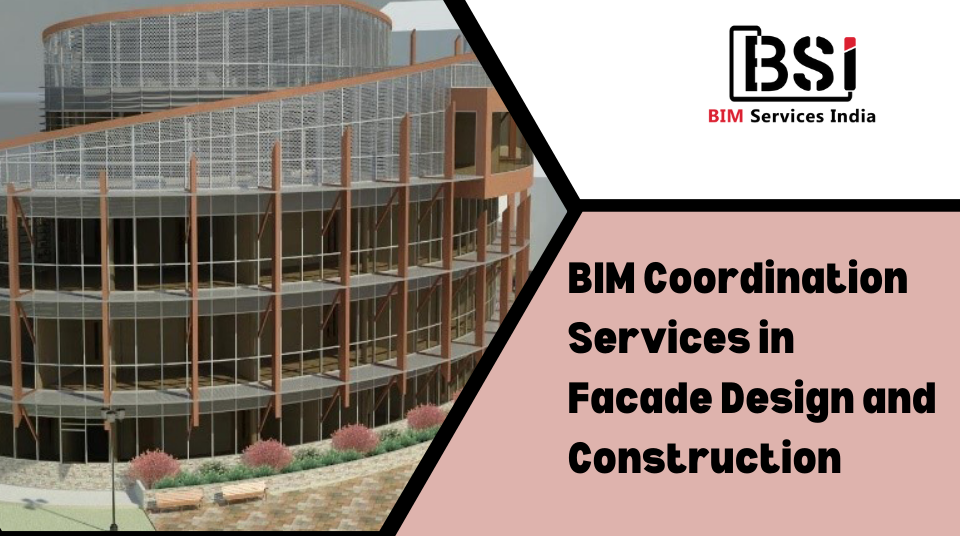Navigating Complex Geometries: BIM Coordination Services in Façade Design and Construction

The design and construction of building facades are becoming increasingly complex. This is due to the use of more intricate geometric shapes, a wider variety of materials, and a growing emphasis on energy efficiency and sustainability. To meet these challenges, many construction projects are now using BIM Coordination Services. Building Information Modeling is a process that creates a data rich digital representation of a building project, which can be used to identify and resolve potential problems before construction begins. BIM coordination specifically focuses on ensuring that all of the different elements of a facade design such as the cladding, windows, and structural supports are compatible with each other. This can help to avoid costly delays and rework during construction. This blog post will explore the benefits of using BIM Coordination Services for façade design and construction, and how they can help to ensure a successful project.
What is BIM Coordination?
BIM coordination is essentially a collaborative process used in construction projects that leverages BIM Services. It ensures that various disciplines involved in a project work together seamlessly to avoid conflicts.
Table of Contents
Here’s a breakdown of what BIM coordination entails:
Combining BIM models: Every specialty, like architects, structural engineers, and MEP (mechanical, electrical, and plumbing) engineers, creates their own BIM model. BIM coordination involves bringing these together into one comprehensive model.
Clash detection: BIM software can automatically identify clashes, which occur when elements from different models overlap or interfere with each other. For instance, imagine ductwork planned to run through the same space designated for electrical wiring. BIM coordination helps find these clashes before construction begins.
Resolving conflicts: Once clashes are identified, the BIM coordinator, a specialist managing the BIM process, works with the respective teams to find solutions. This might involve revising designs or adjusting placements to avoid conflicts during construction.
Advantages of BIM Coordination in Façade Design and Construction for Project Success
BIM Coordination Services offers significant advantages throughout the design and construction process of a building’s facade, contributing to a successful project. Here’s how:
1. Enhanced Communication of Complex Facade Designs: BIM allows for the creation of detailed 3D models of the facade. This visual representation goes beyond traditional 2D drawings and provides a clearer understanding of even intricate design elements. With a 3D model, architects, engineers, and other stakeholders can easily navigate the design, zoom in on specific details, and rotate the model for better comprehension. This improved visualization significantly reduces the risk of misinterpretations and ensures everyone involved is on the same page regarding the facade’s design intent.
2. Improved Collaboration and Coordination: BIM creates a collaborative environment where all project participants have access to the same 3D model of the facade. This shared platform facilitates real-time communication and coordination. Architects, facade engineers, and contractors can use the model to discuss design decisions, identify potential issues, and propose solutions together. This collaborative approach streamlines the design process, avoids conflicts later in construction, and ensures a smooth handover between design and construction phases.
3. Early Clash Detection and Reduced Errors: BIM has built-in clash detection capabilities. These tools can identify potential conflicts between the facade design and other building elements, such as structural components, MEP systems, or windows. By virtually identifying these clashes early in the design phase, necessary adjustments can be made before construction begins. This proactive approach significantly reduces costly errors and rework during construction, leading to a more efficient and streamlined project timeline.
4. Enabling Innovation in Facade Design: BIM offers a high degree of design flexibility. The 3D model allows architects to experiment with different design options, materials, and configurations. They can quickly visualize the impact of these changes on the overall aesthetics and performance of the facade. This flexibility empowers architects to explore innovative design concepts and create dynamic and visually striking facades. Additionally, BIM facilitates the selection and integration of various building materials. Material properties and performance data can be linked to the model, allowing architects to make informed decisions based on factors like sustainability, cost, and energy efficiency.
5. Streamlined Prefabrication Process: BIM Coordination provides a clear and detailed representation of the facade design, including all necessary dimensions and specifications. This information can be directly exported for use in prefabrication processes. Prefabricators can gain a precise understanding of the design intent and plan their work accordingly. This reduces the risk of errors during prefabrication and ensures the facade components arrive on-site ready for installation, ultimately contributing to a faster and more efficient construction process.
Conclusion
In conclusion, BIM Coordination Services offer a multitude of advantages throughout the design and construction of complex building facades. By leveraging BIM technology, stakeholders can achieve improved communication, enhanced collaboration, early clash detection, and streamlined prefabrication, all of which contribute to a successful project outcome. If you are looking to streamline your facade design and construction process and ensure a high-performing and aesthetically pleasing building envelope, then BIM Coordination Services can be a valuable asset to your project. Contact us today to learn more about how our BIM expertise can help you achieve your project goals.